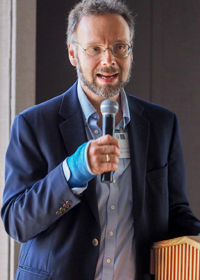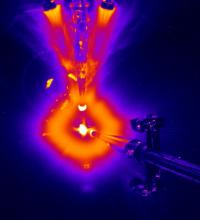
**PLEASE NOTE TIME AND LOCATION CHANGE FOR THIS TALK**
The Multiphysics Object Oriented Simulation Environment (MOOSE) developed at Idaho National Laboratory (INL) represents a novel approach toward nuclear reactor simulation. MOOSE is an HPC development and runtime framework that utilizes a modular approach, allowing scientists and engineers to rapidly create new fully coupled, multiphysics applications. At INL and other institutions, a number of different physics simulation capabilities have been developed based on the MOOSE framework in support of nuclear applications for DOE programs, such as NEAMS, CASL, LWRS, etc. Recent MOOSE framework developments have enabled the efficient combination of multiple, independently developed applications with the goal of achieving massive, multiscale calculations. These developments, which include both a flexible execution strategy and a sophisticated data exchange facility, allow MOOSE-based applications to run concurrently while exchanging data, a process we have termed "multi-coupling". Here, this multi-coupling procedure will be demonstrated for several reactor centric physics to display the algorithmic capability in MOOSE to preform multiphysics simulations of LWRs.
Dr. Richard Martineau (INL) began employment at the INL in July of 1989. He is Director of INL?s Nuclear Science & Technology Modeling and Simulation. Rich is responsible for those aspects of developing advanced numerical methods, scientific numerical packages, high-performance computing frameworks, and multiphysics analysis tools for nuclear power applications. Dr. Martineau has twenty-five years experience conducting computational fluid dynamics research and investigations. Expertise includes computational fluid dynamics, nonlinear coupling methods for multiphysics applications, compressible material dynamics (including stress wave phenomena and shock physics), fluid dynamics and heat transfer theory, and thermodynamics. Dr. Martineau is the primary developer of the MOOSE-based application called Bighorn, which is designed to simulate single- and multi-phase conjugate heat transfer domains. He is also the programmatic and technical lead on the development of RELAP-7, the next generation nuclear reactor systems analysis capability. Dr. Martineau obtained a Ph.D. in Mechanical Engineering from the University of Idaho.






